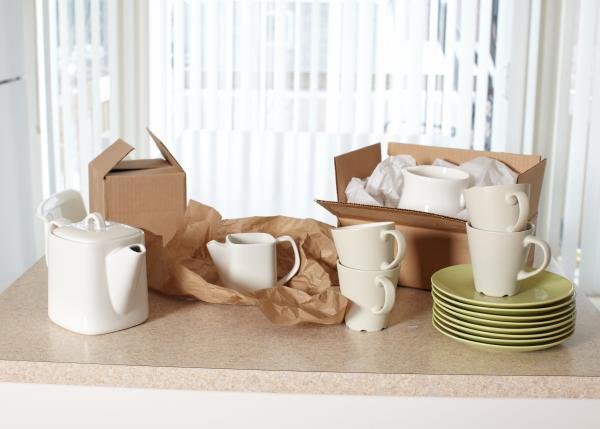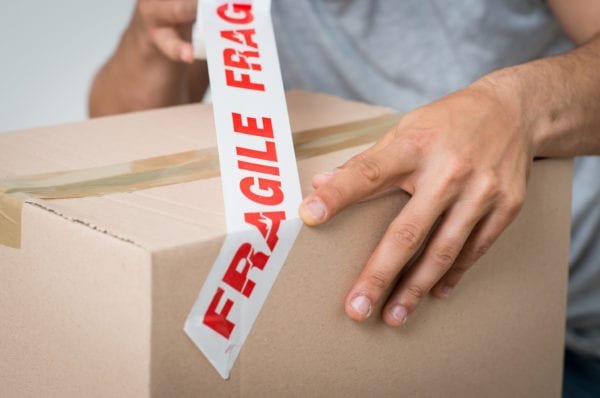SPARTA MOVING HACKS #6: HOW TO PACK CHINA AND OTHER BREAKABLES

Have you ever wondered what the best way to go about your packing fragile items? The most tedious and time-consuming packing falls onto a kitchen and a dining room. That’s where we keep most of our dishware, expensive China and other fragile items.
Professional packing services can help ease the stress of transporting irreplaceable, breakable items, but if you plan to DIY, this guide can help.
1. Use strong thick-walled boxes
Special boxes for fragile items (also known as dish packs, dish barrel box, dish savers, etc.) are your best bet. Dish boxes have partitions to separate delicate items and some also have padding on the inside. They’re also constructed with a double layer of corrugated cardboard.
Those worn-out boxes you’ve been saving or boxes you found for free on Kijiji are fine for clothes, linens and other unbreakable items. However, they could be disastrous for the delicate china and dishware.
Another option is to repack the item in the box it originally came in. Manufacturers don’t want to eat the cost of broken items so they invest in sturdy boxes that provide ample cushion.

2. Packing Paper… Lots Of It
you can never use too much packing paper, when you’re packing dishes or transporting delicate items:
- Start by crumpling up several sheets of packing paper and use that to line the bottom of the box.
- Next, each item should be individually wrapped with a sheet or two of packing paper to protect the surface and minimize the chance of a break.
- When packing cups and mugs put crumpled packing paper inside each one.
- Make sure to fill the void spaces with packing paper as well. It provides cushion and prevents items from shifting during transport.
- Finish it off with a layer of crumpled packing paper on top before taping the box up.
If you have extremely fragile items you may want to substitute the packing paper for bubble wrap.
3. Packing Smart
How you place items in a box also makes a difference. Make sure to follow these pro tips:
- The heaviest items should always be placed in the bottom of the box.
- Laying items flat isn’t always the best option. When you’re packing plates it’s best to line them up vertically in a row after they’re each wrapped in paper. Stemware (wine glasses) should be placed upside down with the rim on the bottom.
- Pack the items in tightly. The less give there is the less likely things are to move around, bump up against one another and break.
- Never put more than 10 pounds in a single box.
You may want to take an additional step of adding cardboard dividers between individual items or rows of items. This is definitely the case, when you’re packing cups and bowls.

4. Double Tape Fragile Boxes
Being in a rush to get packed up, you may be tempted to simply put a single layer of tape down the opening of the top. This is NOT advisable for boxes with fragile items. You’ll need to Go down the center of the opening and reinforce it by taping across the edges as well.
5. Clearly Label Fragile Boxes
Once you have everything boxed up it can be difficult to tell what’s inside. That’s where labeling comes in handy. After taking the time to pack everything up securely, the last thing you want is for the box to be mishandled.
On the sides write “THIS SIDE UP” with an arrow so that the box doesn’t accidentally get carried upside down. Next, write “FRAGILE” in big bold letters on every side of the box and the top. Also include a brief description of what’s in the box, which helps make unpacking easier.
Would you rather not risk breaking Mom’s fine china? Our expert packers take the utmost care to ensure every item makes it to your new home in one piece. Call today or use our online form to get an instant moving and packing quotation!






